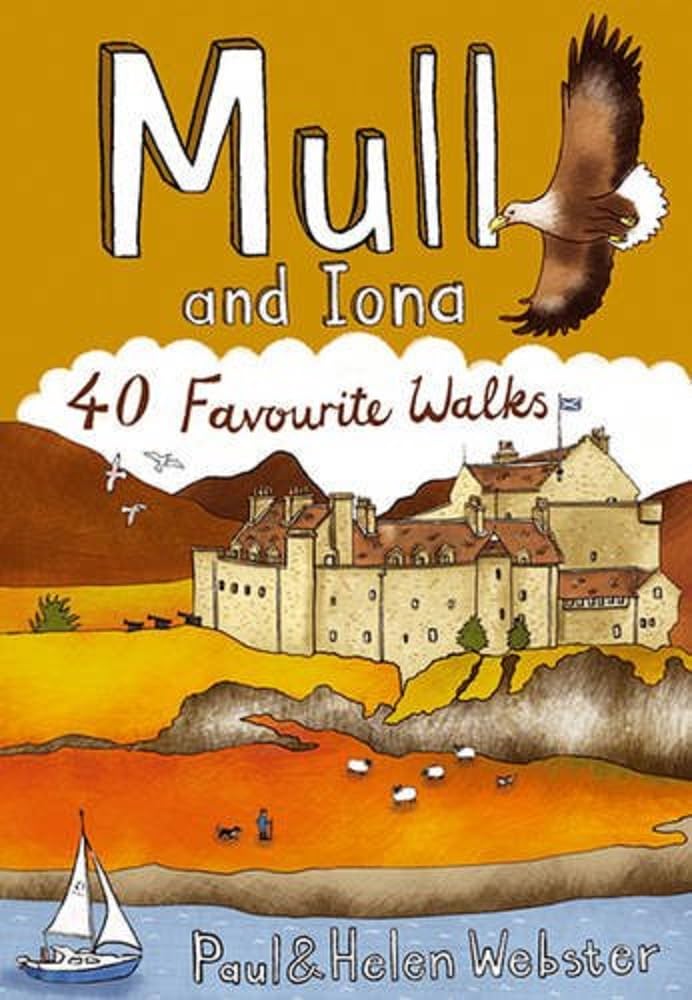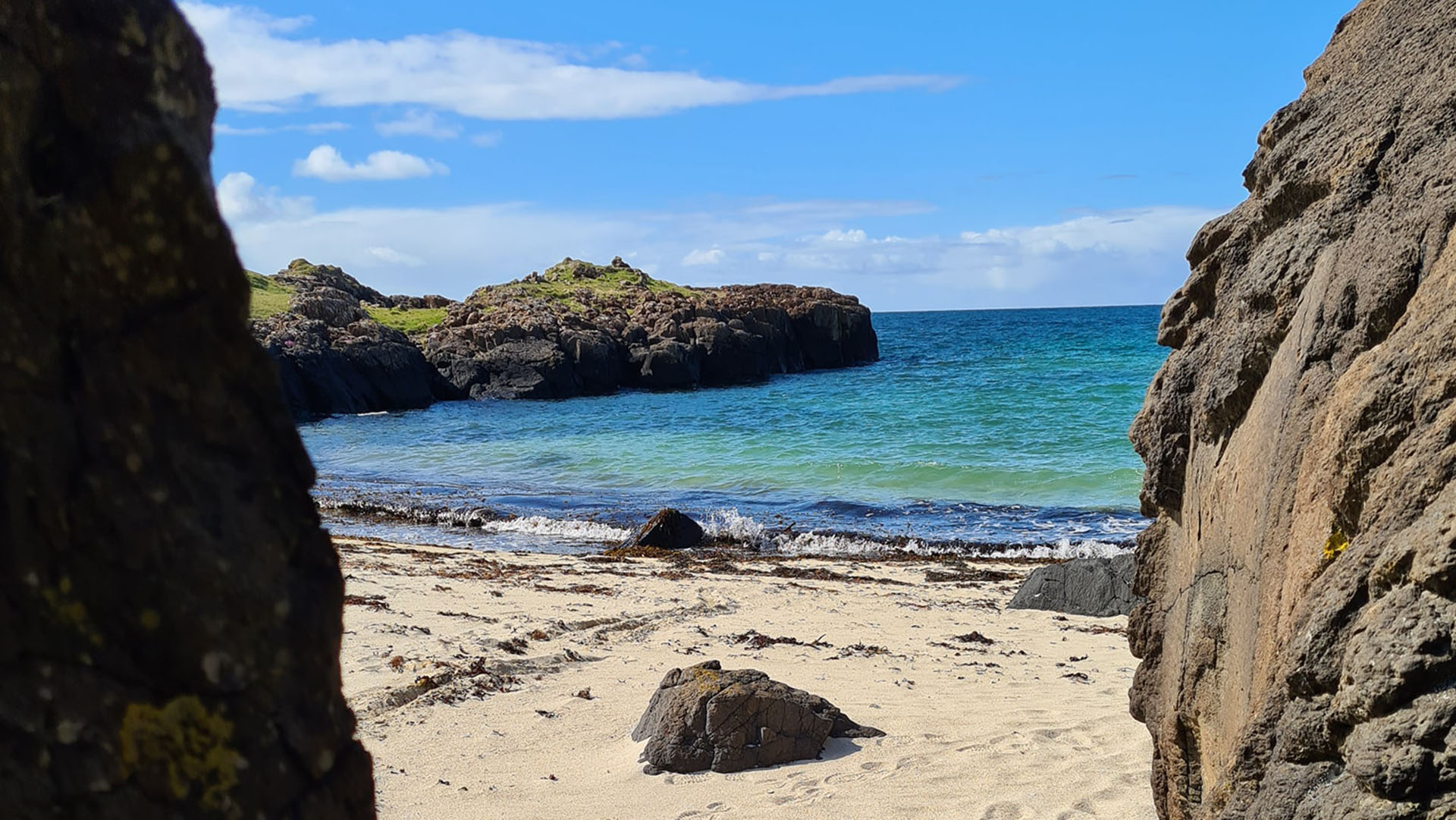
Langamull Beach
1. Visit Mull’s Beautiful Beaches
The Isle of Mull boasts a remarkable array of stunning coastal stretches, offering pristine sands and clear waters perfect for leisurely strolls, sunbathing, or simply enjoying the tranquil scenery. Each beach has its own unique character, promising a memorable experience.
- Calgary Bay: Mull’s most famous beach, known for its white shell sand and turquoise waters on the north-west coast.
- Langamull Beach: A sparkling white sand gem on the north coast, often quieter and requiring a short walk.
- Fidden Beach: Near Fionnphort, distinctive for its white sand interspersed with pink granite outcrops, popular for sunsets.
- Ardalanish Beach: A long, sweeping stretch on the Ross of Mull, known for its wild beauty and beachcombing opportunities.
- Knockvologan Beach: A series of sheltered white sand coves near Fidden, revealing vast sands at low tide and views to Erraid.
- Uisken Beach: A tranquil expanse of white shell sand on the south coast of the Ross of Mull, offering magnificent views.
- Laggan Sands (Lochbuie): A large, dusky white sand bay on the south coast, often shared with local Highland cows.
- Traigh na Cille (Black Beach): A distinctive darker-sanded beach on the west coast, offering a secluded, wild experience.
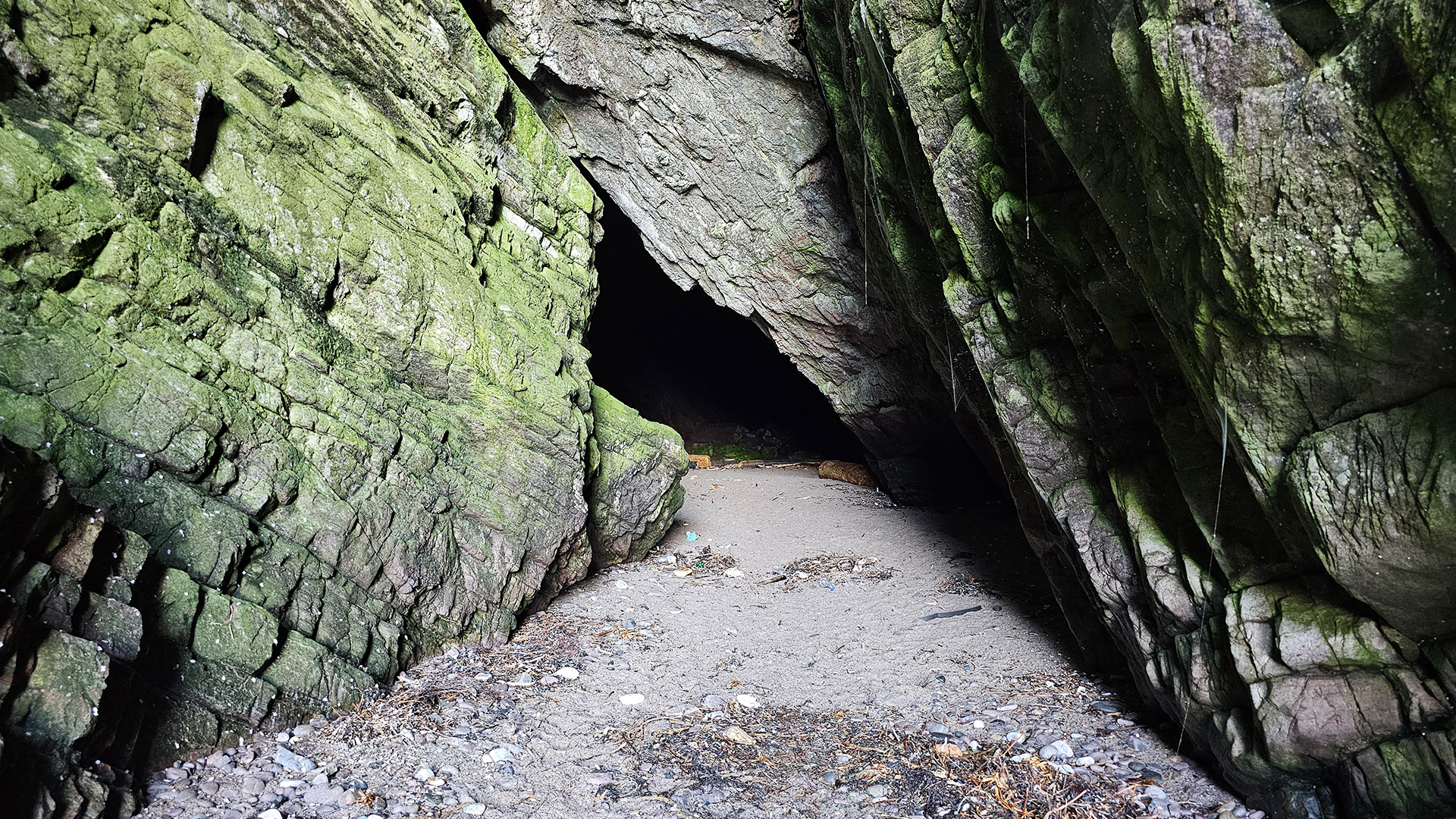
MacKinnon’s Cave
2. Discover Natural Sea Caves
Explore the fascinating geological formations carved by the sea along Mull’s rugged coastline. These natural sea caves offer unique insights into the island’s volcanic past and can provide adventurous exploration opportunities (always check tide times for accessibility).
- Mackinnon’s Cave: The most famous and deepest sea cave on Mull, located near Gribun, accessible at low tide.
- Nun’s Cave (Uamh nan Cailleach): A historical coastal cave near Carsaig, known for ancient carvings and its believed use as a refuge for nuns.
- Scoor Cave: An archaeological site on the Ross of Mull featuring prehistoric and early Christian rock carvings, accessible by walking.
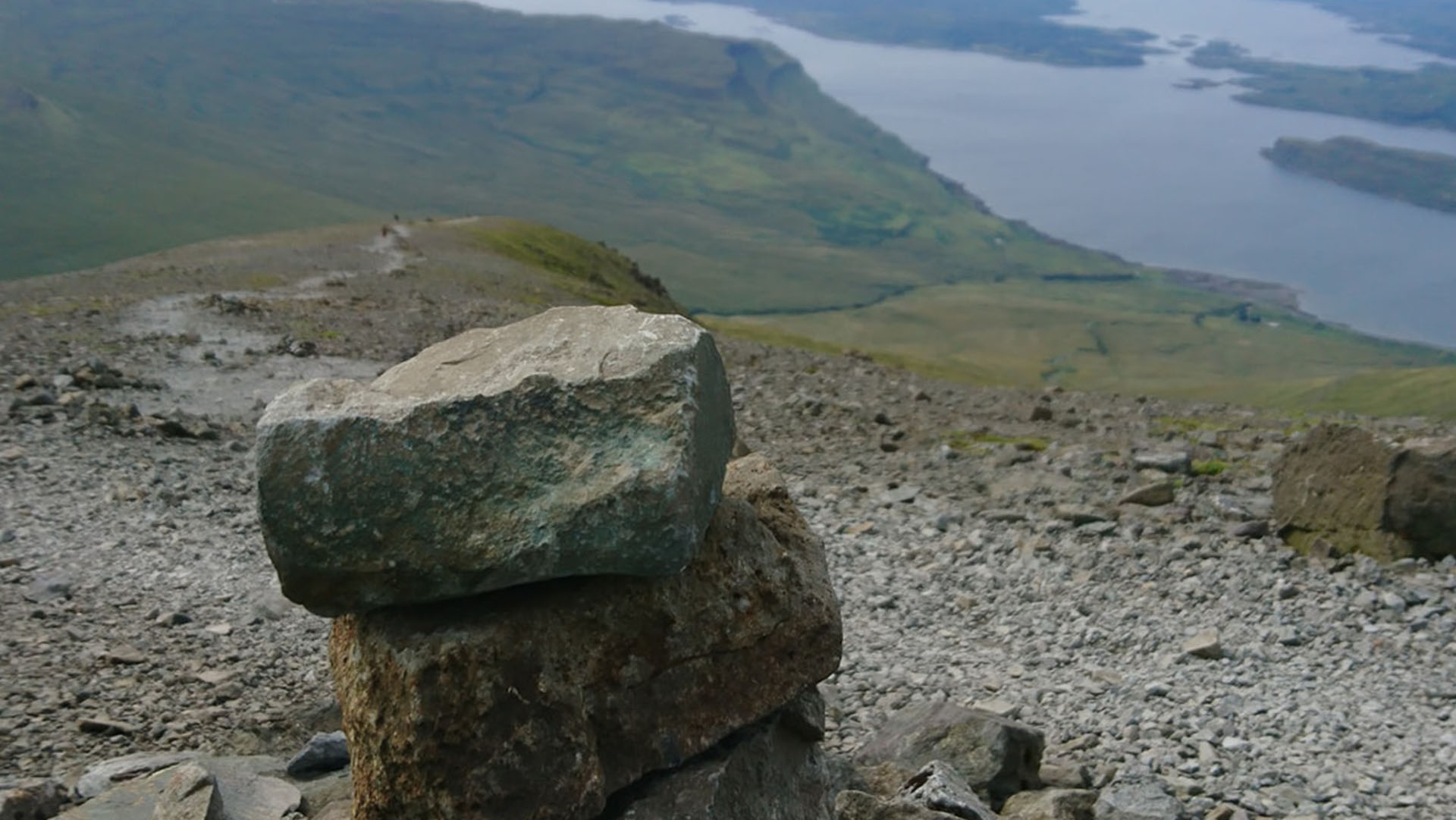
Ben More summit cairn.
3. Hike an Island Peak or Hill
For those who love to challenge themselves, Mull offers several significant elevations providing rewarding climbs and breathtaking panoramic views across the island and surrounding Inner Hebrides. These hikes vary in difficulty but all promise stunning vistas.
- Ben More: Mull’s only Munro (a mountain over 3,000 feet), offering a strenuous but highly rewarding ascent with extensive views.
- Dun da Gaoithe: The second highest peak on Mull, offering superb views and access to an ancient hill fort, an excellent alternative to Ben More.
- Ben Talaidh: A prominent peak in the east of Mull, providing a challenging hike and panoramic views, often less frequented than Ben More.
- Other smaller hills: Numerous unnamed or local hills across the island (e.g., around Calgary or the Ross of Mull) offer gentler walks with fantastic local views.
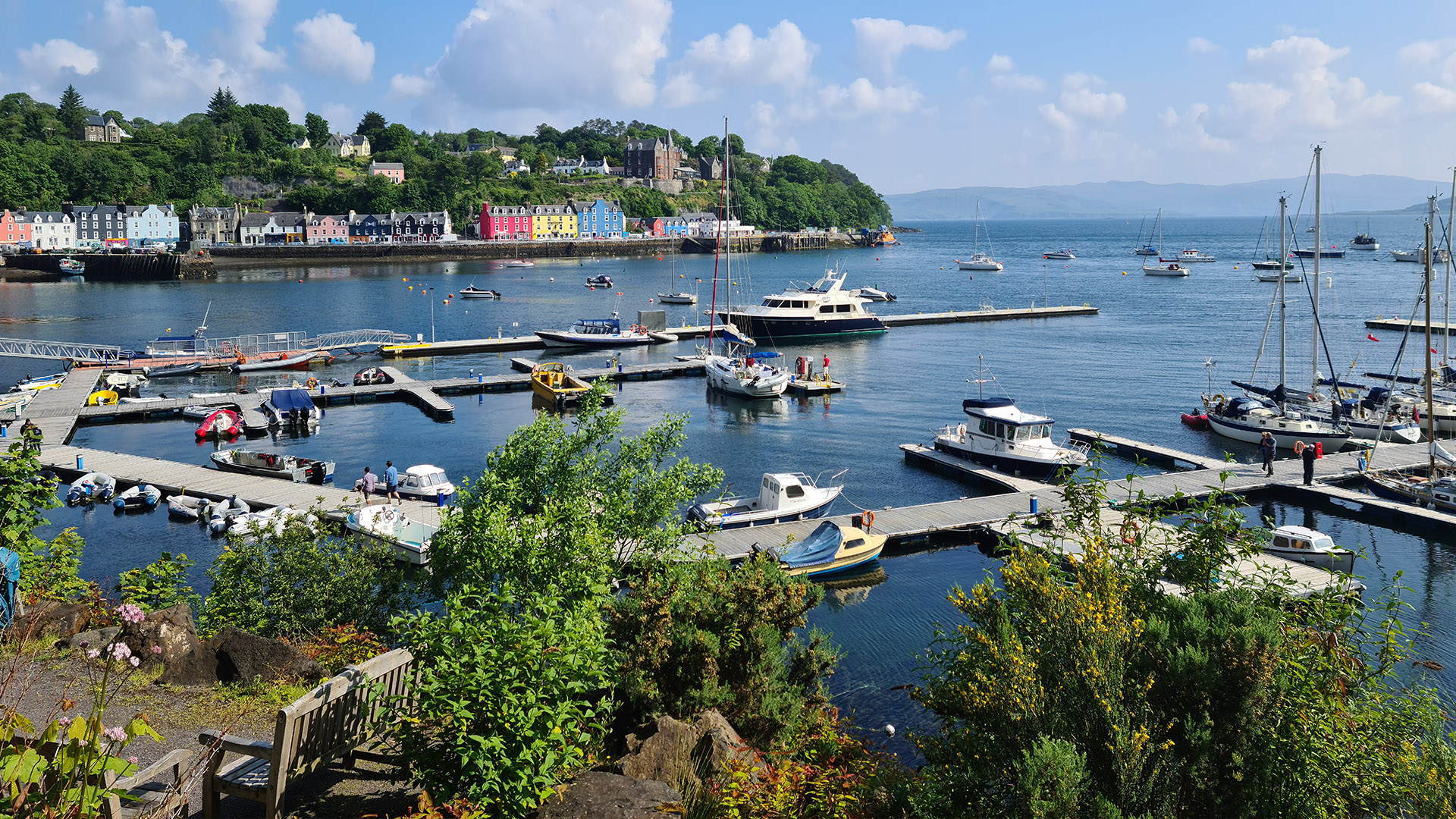
View over Tobermory bay.
4. Explore Charming Island Towns and Villages
Wander through Mull’s picturesque settlements, each offering its own unique character, history, and charm. Discover colourful harbours, local shops, and a glimpse into island life, all free to explore on foot.
- Tobermory: The island’s main town, famous for its iconic brightly painted houses, bustling harbour, and vibrant atmosphere.
- Dervaig: A charming village in the north, known for its unique ‘pencil’ church and tranquil surroundings.
- Salen: A central village with a picturesque bay, offering lovely views and a convenient base for exploring.
- Craignure: The main ferry port village, a gateway to the island with pleasant coastal walks nearby.
- Fionnphort: A small, bustling village on the Ross of Mull, serving as the ferry point for Iona and offering beautiful local scenery.
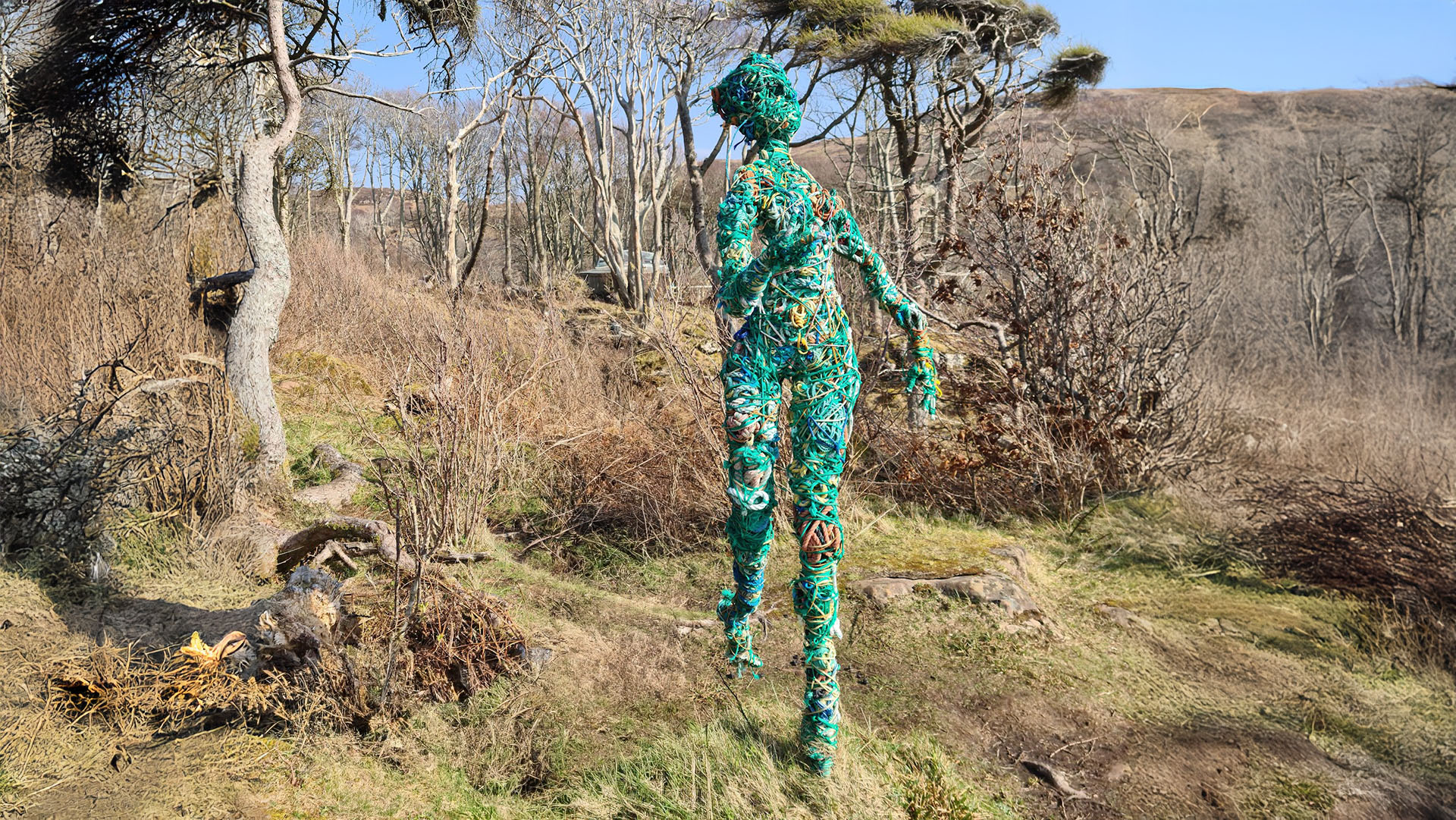
Calgary Art in Nature
5. Enjoy Outdoor Art Experiences
Discover unique artistic installations thoughtfully placed within Mull’s natural landscapes, creating an engaging blend of art and environment. These free experiences offer a different way to interact with the island’s beauty.
- Calgary Art in Nature Trail: A popular woodland sculpture trail near Calgary Bay, featuring various artworks integrated into the natural setting.
- Java Nature Trail: A unique woodland walk near the Craignure ferry terminal, featuring an enchanting collection of wood carvings and sculptures depicting local wildlife, houses, and castles. It’s often illuminated for magical evening exploration.
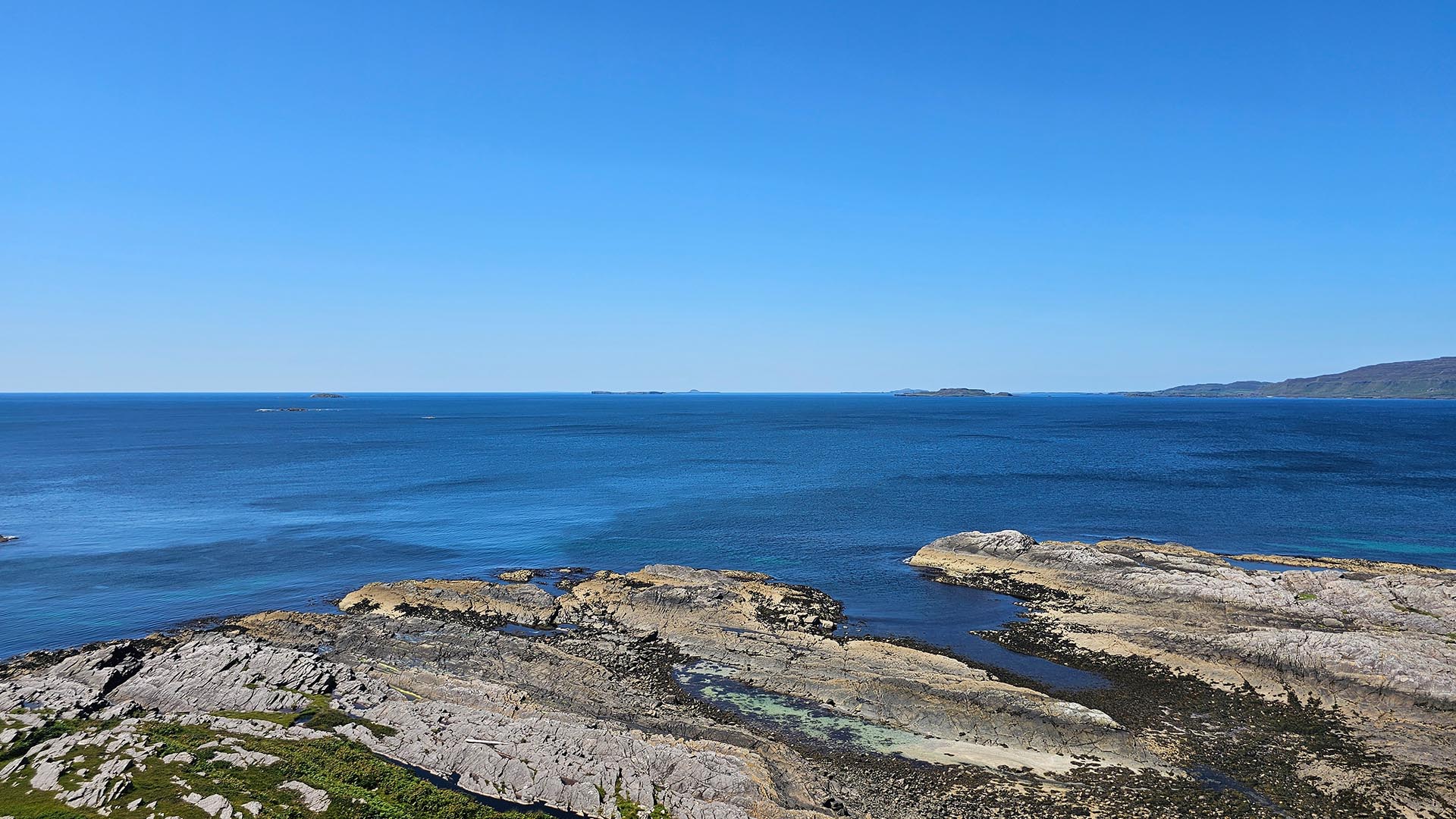
Looking out to see from Balmeanach, Staffa and the Treshnish Isles in view.
6. Embark on Scenic Coastal Walks
Mull’s coastline is a walker’s paradise, offering countless opportunities for invigorating hikes with spectacular sea views, dramatic cliffs, and chances to spot marine wildlife. These walks vary in length and challenge but all promise memorable vistas.
- Rubha nan Gall Lighthouse Walk: A popular two-hour return hike north of Tobermory to a picturesque lighthouse, offering great views of the Sound of Mull.
- Carsaig Arches Walk: A more challenging but highly rewarding walk on the south coast, leading to impressive natural rock arches carved by the sea (ensure you are prepared for a long hike).
- Walks around Calgary Bay: Beyond the beach itself, there are trails through the surrounding woodlands and along the cliffs offering different perspectives.
- Loch Na Keal shoreline walks: Various points along the shores of Loch Na Keal offer easy, picturesque walks with excellent wildlife spotting opportunities, especially for otters.
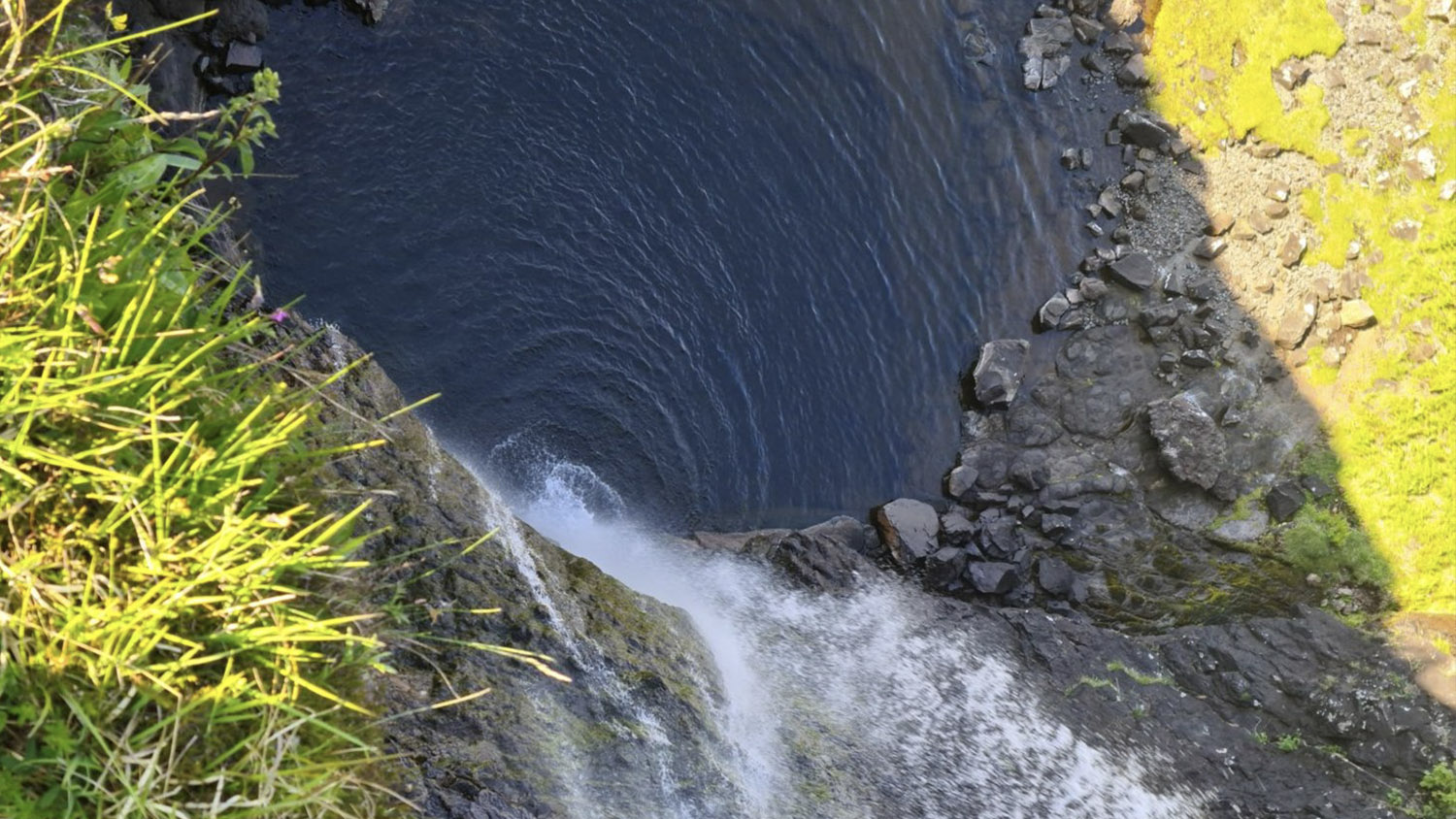
Not for the faint hearted! Looking over the waterfall at Eas Fors.
7. Behold Dramatic Waterfalls
Mull is home to several impressive waterfalls, where water cascades through rugged landscapes, often plunging directly into the sea. These natural spectacles are particularly powerful and awe-inspiring after rainfall.
- Eas Fors Waterfall: A spectacular triple-cascading waterfall on the west coast, notable for its unique plunge into the sea.
- Aros Park Waterfalls: While Aros Park itself has many trails, it features several beautiful waterfalls within its woodlands that are freely accessible.
- Rubha Dubh Waterfall: On Mull’s southern coast, nestled between Carsaig and Lochbuie, lies a striking cascade at Rubha Dubh.
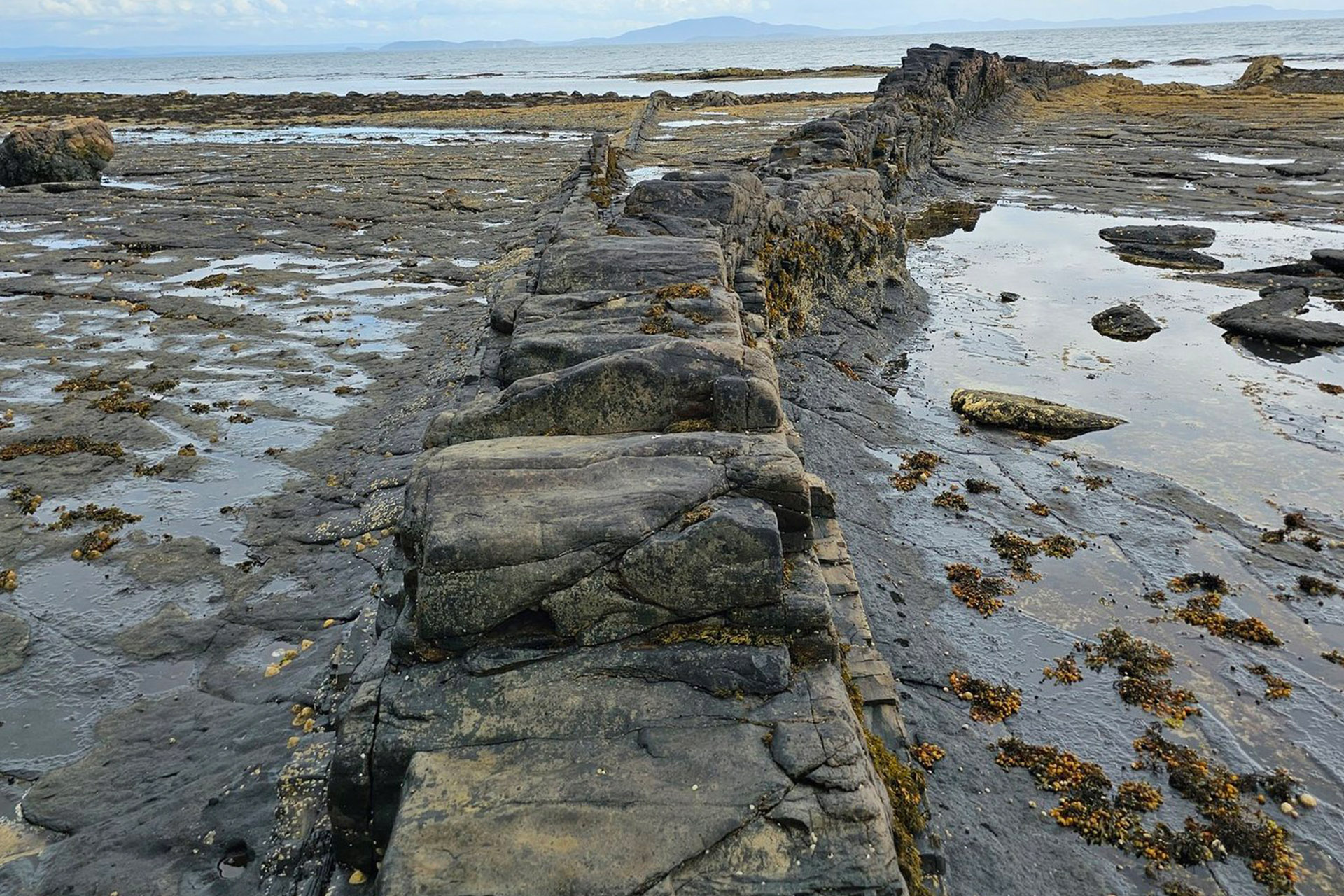
Igneous (dolerite) compound dyke Carsaig
8. Uncover Unique Geological Wonders
Explore the fascinating geological history of Mull, characterized by its volcanic origins. The island showcases unique rock formations and ancient features that tell the story of its dramatic past.
- MacCulloch’s Fossil Tree: A unique geological feature on the west coast, where a fossilized tree is embedded within ancient basalt cliffs, requiring an adventurous walk to access.
- Basalt Columns: While most famous on Staffa, columnar basalt formations can be observed in various coastal cliffs and outcrops around Mull, particularly on the west and south coasts (e.g., around Carsaig).
- Volcanic Plugs: Observe the remnants of ancient volcanoes, like the prominent basaltic plugs seen as distinctive hills (e.g., near Ulva Ferry).
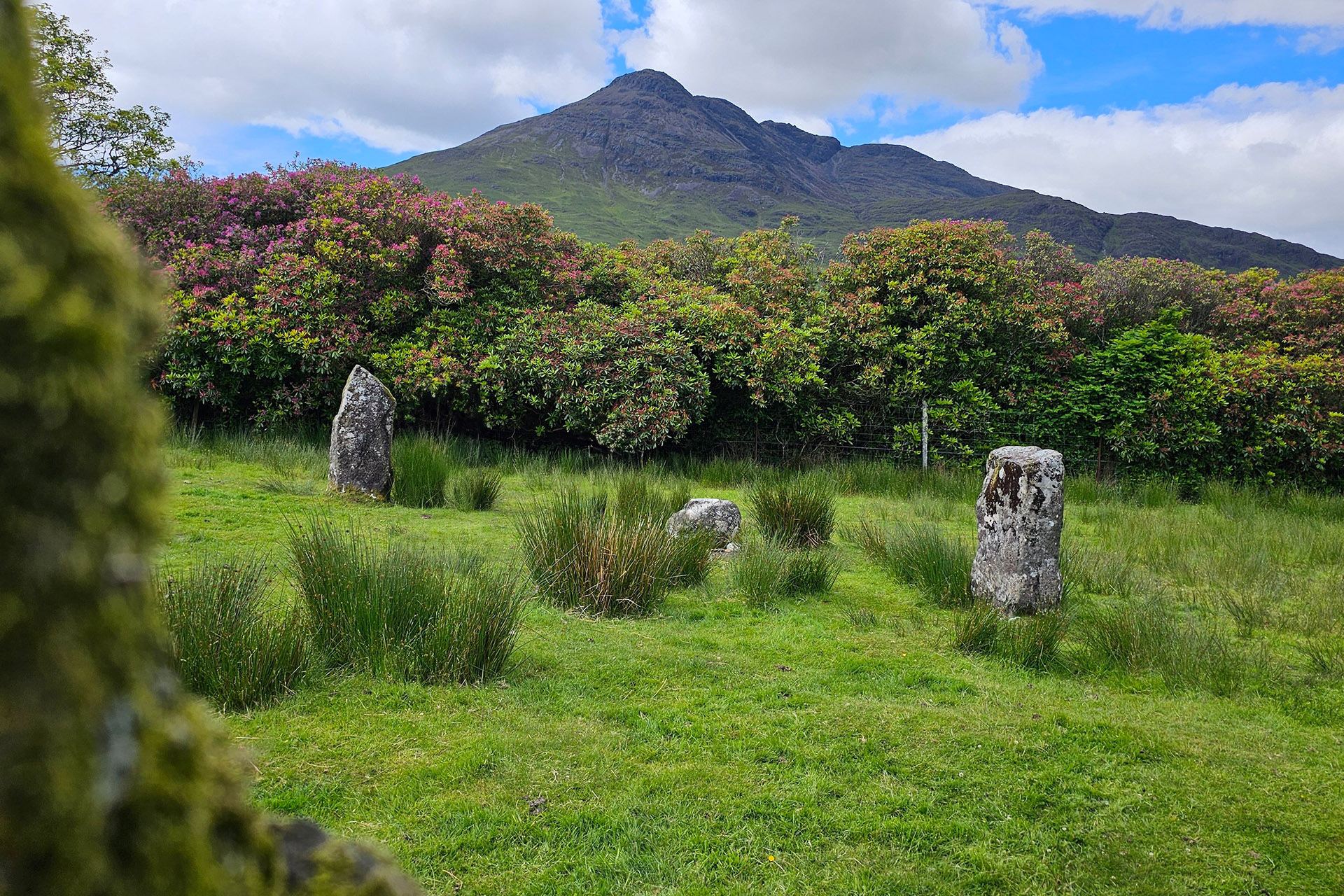
Lochbuie Standing Stones
9. Step Back in Time at Ancient Sites and Ruins
Discover the rich history of Mull by visiting its various ancient sites, standing stones, and ruins. These free-to-explore locations offer a tangible connection to the island’s past, from prehistoric times to medieval periods.
- Lochbuie Stone Circle: A remarkably well-preserved ancient stone circle near Lochbuie, offering a serene and atmospheric glimpse into prehistoric heritage.
- Moy Castle Ruins: The picturesque ruins of a 15th-century tower house near Lochbuie, which can be viewed from the exterior, offering a glimpse into medieval history.
- Aros Castle Ruins: Explore the remains of this historic 13th-century castle near Salen, offering atmospheric views over the Sound of Mull and a tangible link to the island’s past.
- Standing Stones: Various other smaller standing stones and cairns can be found across the island, testament to its ancient inhabitants (e.g., near Ardalanish).
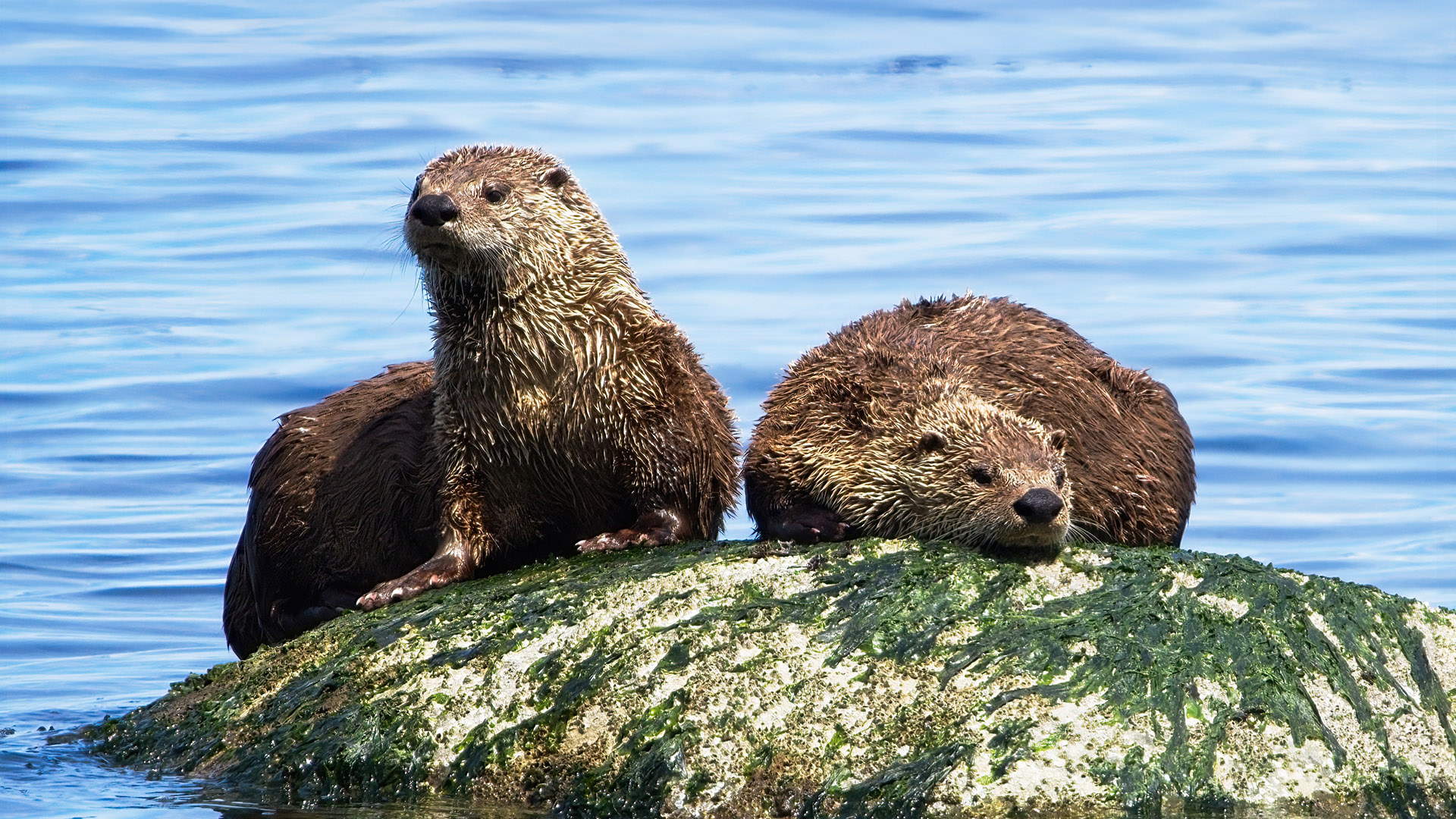
Otters like us love to sunbathe!
10. Spot Mull’s Abundant Wildlife
Mull is a designated National Scenic Area and a true haven for incredible Scottish wildlife. Spending time quietly observing the island’s diverse fauna in their natural habitats is a truly rewarding and free experience.
- Golden Eagles and White-tailed Sea Eagles: Often seen soaring over the island’s mountains and lochs, particularly around the Loch Na Keal area.
- Otters: Elusive but often spotted along the coastline, especially in tranquil lochs and sea lochs during dawn or dusk.
- Red Deer: Common throughout the island, particularly in the glens and hills, easily seen from roadsides.
- Seals: Both Common and Grey seals can be seen basking on rocks along the coast, especially in sheltered bays and near river mouths.
- Coastal Birds: A wide variety of seabirds, waders, and raptors can be observed along the shores and cliffs (e.g., near Staffa ferry points, coastal walks).
The Isle of Mull is the second largest of the Inner Hebrides. Perhaps best known for the colourful harbour of Tobermory, its capital at the northern end of the island, Mull has become very popular as a holiday destination, most particularly amongst wildlife enthusiasts. This latest publication from "Pocket Mountains" brings together the very best walking routes on Mull and the neighbouring islands of Iona and Ulva, both easily reached via short ferry journeys. Mull includes some of the wildest coastal scenery in the UK as well as many grand mountains, pretty villages and stunning sandy beaches.

